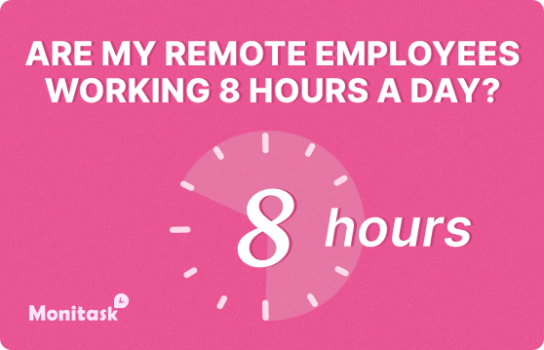Employee Tenure
Employee Tenure: Understanding the Backbone of Organizational Stability
In the ever-evolving landscape of human resources, employee tenure stands as a crucial metric that offers valuable insights into the health and stability of an organization. This comprehensive guide delves deep into the concept of employee tenure, exploring its significance, impact, and the various factors that influence it.
What is Employee Tenure?
Employee tenure refers to the length of time an individual has been employed by a particular organization. It's a measure of how long employees typically stay with a company, reflecting both the organization's ability to retain talent and the employees' satisfaction and commitment to their roles.
Calculating employee tenure is relatively straightforward: it's the period between an employee's start date and their end date (or the current date for active employees). However, interpreting this data and understanding its implications requires a nuanced approach.
The Importance of Employee Tenure
Understanding employee tenure is crucial for several reasons:
- Organizational Stability: Longer tenures often indicate a stable work environment and satisfied employees.
- Cost Implications: High turnover (short tenures) can be expensive due to recruitment and training costs.
- Productivity: Experienced employees with longer tenures are typically more productive and efficient.
- Company Culture: Tenure patterns can reflect and influence the overall culture of an organization.
- Knowledge Retention: Long-tenured employees often possess valuable institutional knowledge.
Factors Influencing Employee Tenure
Numerous factors can impact how long an employee stays with a company:
1. Job Satisfaction
Perhaps the most significant factor, job satisfaction encompasses various aspects such as work environment, relationships with colleagues and superiors, and the nature of the work itself. Employees who find their work fulfilling and enjoyable are more likely to stay longer.
2. Career Growth Opportunities
Organizations that provide clear paths for advancement and professional development tend to retain employees for longer periods. When employees see a future within the company, they're more inclined to invest their time and effort.
3. Compensation and Benefits
While not the sole determinant, competitive salaries and comprehensive benefits packages play a crucial role in retention. Employees who feel fairly compensated are less likely to seek opportunities elsewhere.
4. Work-Life Balance
In today's fast-paced world, employees increasingly value flexibility and a healthy work-life balance. Companies that offer flexible working arrangements often see improved tenure rates.
5. Company Culture and Values
A strong, positive company culture that aligns with an employee's personal values can significantly enhance tenure. Employees who feel a sense of belonging and purpose are more likely to stay long-term.
6. Leadership and Management
The quality of leadership within an organization can greatly impact employee tenure. Effective, supportive managers who provide clear direction and recognition can inspire loyalty and longevity.
7. Job Security
Employees who feel secure in their positions and confident in the company's stability are more likely to commit to longer tenures.
The Impact of Employee Tenure on Organizations
Employee tenure can have far-reaching effects on various aspects of an organization:
1. Productivity and Efficiency
Long-tenured employees often develop deep expertise in their roles, leading to increased productivity and efficiency. They understand the nuances of their jobs and the organization's processes, allowing them to work more effectively.
2. Customer Relationships
In customer-facing roles, longer tenures can lead to stronger, more stable customer relationships. Customers appreciate dealing with familiar faces who understand their needs and history.
3. Innovation and Adaptability
While long tenures can bring stability, they can sometimes lead to complacency. Organizations need to balance the benefits of long-tenured employees with the fresh perspectives that new hires can bring.
4. Organizational Culture
Employee tenure significantly shapes and reflects organizational culture. A mix of long-tenured employees who understand the company's history and newer employees who bring fresh ideas can create a dynamic and resilient culture.
5. Cost Implications
High turnover (short average tenures) can be costly. The expenses associated with recruiting, hiring, and training new employees can add up quickly. Conversely, retaining employees for longer periods can lead to significant cost savings.
Measuring and Analyzing Employee Tenure
To effectively leverage employee tenure data, organizations should consider the following approaches:
1. Regular Tracking
Consistently monitor employee tenure across different departments, roles, and demographic groups. This can help identify trends and potential issues.
2. Benchmarking
Compare your organization's tenure data with industry standards. This can provide context and help set realistic goals.
3. Exit Interviews
Conduct thorough exit interviews to understand why employees leave. This information can be invaluable in improving retention strategies.
4. Employee Surveys
Regular surveys can help gauge employee satisfaction and identify factors that might impact tenure before they lead to turnover.
5. Predictive Analytics
Utilize advanced analytics to predict potential turnover risks and take proactive measures to retain valuable employees.
Strategies for Improving Employee Tenure
Organizations looking to enhance employee tenure should consider implementing the following strategies:
1. Robust Onboarding Programs
A comprehensive onboarding process can set the stage for a long and successful tenure. It helps new employees integrate quickly and feel valued from day one.
2. Career Development Opportunities
Provide clear paths for advancement and support employees in their professional growth. This can include mentorship programs, training opportunities, and internal promotion policies.
3. Recognition and Reward Systems
Implement programs that acknowledge and reward employee contributions. This can include performance-based bonuses, public recognition, or additional perks for long-serving employees.
4. Flexible Work Arrangements
Offer options like remote work, flexible hours, or compressed workweeks to accommodate diverse employee needs and preferences.
5. Regular Feedback and Communication
Establish open channels of communication and provide regular, constructive feedback. This helps employees feel heard and valued.
6. Competitive Compensation and Benefits
Regularly review and adjust compensation packages to ensure they remain competitive within your industry.
7. Focus on Work-Life Balance
Promote a culture that respects work-life balance. This can include policies on overtime, vacation time, and personal days.
The Future of Employee Tenure
As the nature of work continues to evolve, so too will the concept of employee tenure. Several trends are likely to shape its future:
1. Gig Economy and Freelancing
The rise of the gig economy and freelance work may lead to shorter average tenures in some industries. Organizations will need to adapt their strategies to retain talent in this new landscape.
2. Remote Work
The increasing prevalence of remote work may impact how employees view their relationship with employers, potentially affecting tenure patterns.
3. Generational Shifts
As younger generations enter the workforce with different expectations and career goals, organizations may need to rethink traditional approaches to tenure and retention.
4. Skill-Based Economy
As the economy becomes increasingly skill-based, employees may prioritize skill development over long-term commitments to a single organization.
Conclusion
Employee tenure remains a critical metric in understanding and managing organizational health. While long tenures are generally seen as positive, the ideal tenure can vary depending on the industry, role, and organizational goals.
By understanding the factors that influence tenure, measuring it effectively, and implementing strategies to enhance it, organizations can create an environment that fosters both stability and innovation. As the workplace continues to evolve, so too must our approach to employee tenure, ensuring that it remains a valuable tool in building successful, resilient organizations.
Ultimately, the goal should not simply be to increase tenure for its own sake, but to create an environment where employees want to stay, grow, and contribute their best work. By focusing on the factors that truly matter to employees – from job satisfaction and growth opportunities to work-life balance and a positive culture – organizations can build a workforce that is not just long-tenured, but also engaged, productive, and aligned with the company's mission and values.
As we move forward in an increasingly dynamic business landscape, the concept of employee tenure will undoubtedly continue to evolve. Organizations that remain adaptable, responsive to employee needs, and committed to creating meaningful work experiences will be best positioned to navigate these changes and maintain a thriving, loyal workforce.


